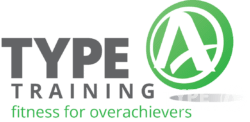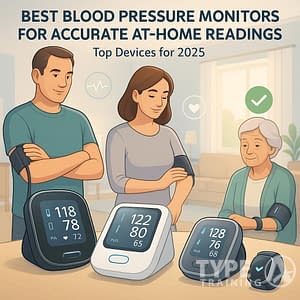Most Manhattan professionals know the struggle—neck pain, back stiffness, and that slumpy posture from hours at a Midtown desk or being packed into the subway. Corrective exercise integration brings together targeted movement assessments and personalized exercises. These exercises tackle your specific muscle imbalances and movement quirks, all within your regular workouts.
This approach helps busy New Yorkers prevent injuries. It also boosts your workout results, which honestly, who doesn’t want?

Maybe you’re a Wall Street exec dealing with forward head posture. Or maybe you’re a Chelsea local with tight hips from pounding the pavement. Integrating corrective exercise into fitness programs can help address these issues effectively.
Popular posts:
Corrective exercise can totally change your fitness game. It all starts with understanding how you move and spotting the real reasons for pain or weird movement—before things get worse.
Key Takeaways
- Movement assessments spot muscle imbalances and dysfunctions that regular workouts miss.
- Corrective exercises work best when you slip them into warm-ups, rest periods, and at-home routines—not as a stand-alone session.
- To really see results, you’ve gotta reassess and tweak the program as your body and goals change.
Core Principles of Corrective Exercise Integration

Successful corrective exercise means you need to get the basics of movement dysfunction and use targeted mobility and stability strategies. These ideas help Manhattan folks and athletes handle movement issues from desk work, commuting, and just living that city life. Integrating corrective exercise into fitness programs is a key part of this strategy.
Defining Corrective Exercise and Its Benefits
Corrective exercise is basically an integrated way to spot muscle imbalances and build custom programs. It mixes flexibility, isolated strengthening, and functional moves to restore muscle balance and improve how you move.
Your body picks up weird compensation habits from daily stuff like sitting in Midtown offices or lugging bags through subway stations. These habits throw your muscles out of whack and mess with how efficiently you move.
Key Benefits of Corrective Exercise:
- Cuts down injury risk during workouts
- Makes everyday movement smoother
- Boosts athletic performance
- Eases chronic pain from bad posture
A Corrective Exercise Specialist in Manhattan can spot these imbalances with movement assessments. They’ll put together a plan that actually fits what your body needs.
Instead of just chasing symptoms, this approach goes after the real causes. If you’ve got shoulder pain from computer work, you might need thoracic spine mobility drills and deep neck flexor exercises—not just shoulder stretches.
Addressing Movement Dysfunction in Fitness Programs
Movement dysfunction pops up when your body starts moving weirdly to make up for stiff or unstable areas. These patterns stick and show up in your workouts and daily life.
NYC folks often deal with forward head posture, rounded shoulders, and tight hip flexors. All that sitting, phone scrolling, and bag carrying adds up.
Levels of Movement Dysfunction:
- Level 1: Minor compensations, not a big deal yet
- Level 2: Moderate issues that mess with your form
- Level 3: Serious dysfunction—needs fixing ASAP
A Movement Assessment NYC pro watches your moves during basics like squats and overhead reaches. They’ll spot where you’re compensating and decide what needs fixing first.
Corrective exercises work best as part of a full fitness plan. Include cardio, strength, and flexibility so you’re not leaving any gaps.
Role of Mobility and Stability
Mobility and stability are like peanut butter and jelly—they only work if you get the balance right. Mobility is how far your joints can move, and stability is about controlling that movement.
Some body parts need to move, others need to stay put. For example, your thoracic spine should be mobile so your shoulders work right, but your lower back needs stability to keep you safe.
Mobility-Stability Relationship:
- Ankle: Needs to move for deep squats
- Knee: Needs to stay steady
- Hip: Needs to move well for functional stuff
- Lumbar Spine: Needs to stay solid
- Thoracic Spine: Needs to move for overhead stuff
Upper East Siders often have stiff thoracic spines from hunching over laptops. That leads to neck and shoulder issues when reaching overhead.
A Posture Correction Manhattan pro will help you get mobility where you need it and stability where you don’t. They might suggest thoracic extensions and deep neck flexor work if you’re at a desk all day.
The trick is knowing what to stretch and what to strengthen. Stretching a stable joint or beefing up an already mobile one can backfire.
Assessment Techniques for Identifying Movement Issues
Effective movement assessment mixes structured screening tools with a personal touch to spot compensation patterns and mobility hang-ups. Manhattan fitness pros use these to build targeted corrective exercise plans for city dwellers.
Movement Screening and Functional Movement Screen
The Functional Movement Screen (FMS) checks movement patterns and spots limitations with seven key tests. Trainers use this system to catch dysfunctions before they turn into injuries.
Key FMS Movement Tests:
- Deep squat
- Hurdle step
- In-line lunge
- Shoulder mobility
- Active straight leg raise
- Trunk stability push-up
- Rotary stability
Each test shows where you’re compensating—usually thanks to long subway rides or endless desk work.
Movement assessments give trainers the info they need to tailor your program. It takes maybe 15-20 minutes and points out what to fix first.
Personalized Assessment and Movement Compensation
Your body finds workarounds for weak or stiff spots, and that’s called compensation. A Corrective Exercise Specialist in Manhattan will pick up on these patterns by watching how you move.
Common Compensation Patterns in NYC:
- Tight hip flexors from sitting
- Forward head posture from screens
- Rounded shoulders from desk setups
- Stiff ankles from walking on hard surfaces
Personalized assessments help spot imbalances tied to your daily routine. An Upper East Side exec’s issues might look different from a Financial District trader’s.
Your trainer pays attention while you walk, squat, or reach. These little things often show more than a standard fitness test ever could.
Understanding Range of Motion and Poor Posture
Range of motion checks how far your joints can go in each direction. Bad posture can mess with that range and set off a chain reaction in your whole movement system.
Key ROM Tests:
- Shoulder flexion and extension
- Hip flexion and internal rotation
- Ankle dorsiflexion
- Thoracic rotation
Life in Manhattan throws in some unique postural challenges. Heavy bags, crowded sidewalks, subway stairs—it all adds up.
Movement and posture assessments find functional gaps that hold you back in workouts. A Movement Assessment NYC specialist uses these results to figure out what to work on first.
Poor posture doesn’t just mess up one thing—it can throw your whole system out of whack. Forward head posture, for example, limits shoulder mobility and puts extra strain on your lower back.
Designing and Implementing Corrective Exercise Programs
Building a good corrective exercise plan starts with a real look at how you move and picking the right exercises. You want a plan that fixes your imbalances and moves you toward your goals—without overdoing it.
Creating a Personalized Exercise Program
Your journey starts with a thorough movement assessment. A qualified corrective exercise specialist checks out your posture, movement, and pain points to spot dysfunctions.
Manhattan professionals tend to have similar issues thanks to all those hours at desks and on trains—think forward head, rounded shoulders, tight hips. Your program should tackle those urban-life problems.
Assessment Areas to Cover:
- Static posture
- Movement screening
- Pain and injury history
- Daily routine
- Fitness goals and limits
Your specialist will decide what to address first. If you’re crunching numbers in Midtown, you might need extra thoracic mobility and hip flexor stretches.
The plan should lay out how often you do each exercise, how long, and how hard. Most corrective routines need daily attention, so home exercises are a must for busy New Yorkers.
Exercise Selection and Progression Strategies
Corrective exercise plans follow a step-by-step progression. That way, your body adapts safely and you build better movement for the long haul.
Three-Phase Progression:
- Self-Myofascial Release – Foam rolling and massage loosen up tight spots.
- Mobility and Stretching – Get your joints moving like they should.
- Strengthening – Build stability and control in your new movement patterns.
Pick exercises that fit your assessment. If you’re glued to a computer in the Upper East Side, try thoracic foam rolling, chest stretches, and upper back work.
You’ll see mobility gains in 2-4 weeks, but strength takes more like 6-8 weeks of sticking with it.
Your specialist will tweak things as you go—maybe longer stretches, more resistance, or harder moves as you get stronger.
Incorporating Strength Training and Muscle Activation
Once you’ve loosened up, strength training becomes the star. You need to teach your muscles to work right in their new ranges, or else old habits sneak back in.
Muscle activation drills wake up those muscles that have been snoozing. Manhattan folks often need to target deep neck flexors, mid-back, and glutes.
Your strength plan should hit:
- Functional moves that match real life
- Multi-directional exercises for better stability
- Progressive overload to keep getting stronger
- Quality of movement—don’t just chase reps
Chelsea gym regulars often weave corrective exercises right into their workouts. Maybe you do hip stretches between sets or add glute activations to your warm-up.
Make it fit your life. Whether you’re in SoHo or the Financial District, your plan should include stuff you can do at home, at work, or in your gym.
Practical Application and Long-Term Considerations
To really make corrective exercises work, you’ve gotta know the right injury prevention strategies and adapt them for whoever you’re working with. The real secret? Keep an eye on your progress and tweak your plan as your life and body change—especially in a city that never slows down.
Corrective Exercises for Injury Prevention
Injury prevention is really the heart of any smart corrective exercise program. You’ve got to catch muscle imbalances before they turn into those nagging aches that mess with your day.
Hip flexor stretches are a must for Manhattan professionals stuck at their desks for hours. Sitting tightens up your hip flexors, which can tilt your pelvis forward and spark lower back pain.
Doing the couch stretch for just a couple minutes a day helps bring back hip mobility. It’s simple, and honestly, it works wonders.
Core stability exercises like dead bugs and bird dogs teach your body how to hold a healthy spine. They wake up those deep core muscles without putting your back at risk.
These moves are perfect for busy Midtown folks who need something quick and effective. No fancy equipment required—just a bit of floor space.
Upper back mobility matters too, especially with all the screen time in the city. Wall slides and thoracic rotations undo a lot of that forward hunch from phones and laptops.
Corrective exercise specialists in Manhattan always say to master the basics before moving on. It’s about building good habits and keeping injuries at bay.
Integrating Mobility and Core Stability Techniques
Mobility work and core stability go hand in hand. If you want real results, it’s smart to warm up your muscles before diving into stability drills.
Kick things off with some self-massage using a foam roller or even a tennis ball. Spend 30-60 seconds on those stubborn knots in your upper back, glutes, or IT band.
Once you’ve loosened up, go into stretching. Hip flexor and glute stretches, plus thoracic rotations, tackle the tight spots city dwellers deal with from pounding the pavement.
Core stability fits right in with functional moves. Planks with arm reaches fire up your core while mimicking real-life activities.
Single-leg deadlifts? They’re awesome for balance and glute strength at the same time. It’s a two-for-one deal.
Breathing techniques make everything more effective. Try diaphragmatic breathing during stretches to relax and boost your range of motion.
When you’re hitting core exercises, focus on your breathing to stabilize your spine. It’s subtle but makes a difference.
If you’re feeling ambitious, string moves together into a flow. For example, move from a hip flexor stretch right into a lunge with rotation—it saves time and keeps things interesting.
Adaptations for Athletes and Overuse Injuries
Athletes really need their own approach. Their routines, practice schedules, and recovery all affect how you should design a program.
Overuse injuries pop up from doing the same thing over and over—think runners in Central Park with IT band issues. Corrective exercise programs help by adding lateral movements and hip strengthening.
Tennis players in Manhattan clubs often get shoulder pain from all the overhead action. Posterior capsule stretches and rotator cuff work help even things out.
Athletic performance jumps when you fix weak links. Glute activation boosts sprint speed, and single-leg stability cuts down on knee injuries.
During competition season, athletes need to scale things back. Maintenance stretches and activation drills keep them limber without draining their energy.
Off-season is the time to really dig into corrective work and make progress. There’s more space to experiment and push a bit harder.
Recovery protocols blend corrective moves with other recovery tools. On rest days, gentle mobility keeps blood flowing and helps tissues bounce back.
Monitoring Outcomes and Program Adjustments
Tracking progress is key if you want your corrective work to actually pay off. It’s not just about doing the moves—it’s about knowing what’s working.
Movement assessments give you a starting point. Try an overhead squat to spot where your body compensates.
Take photos or videos to see changes over time. It’s way easier than guessing if you’re improving.
Pain scales can help too. Jot down your pain from 1-10 before you start, then check in every few weeks.
Most folks in the Upper East Side see a big drop in pain within a month or so if they stick with it. That’s pretty motivating.
Functional improvements matter more than perfection. If you can sit at your desk without back pain or take the subway stairs without your knees screaming, you’re winning.
Adjust your program based on how you feel. Some people need more stretching, others need to get stronger.
Movement assessment specialists in NYC suggest reviewing your routine every month. It keeps things fresh and effective.
Lifestyle factors play a role too. Extra stress at work? Maybe add more relaxation exercises.
Seasonal changes can mean tweaking your program. Don’t be afraid to mix things up to keep your progress going.
Consistency is the real secret. Two or three sessions a week can keep you feeling good once you’ve made some gains.
Frequently Asked Questions
Manhattan professionals always have questions about corrective exercise routines. From how the phases work to how many reps to do, there’s a lot to figure out.
Let’s break down the most common questions about fitting corrective exercises into your NYC routine.
What are some effective corrective exercise examples for general fitness?
Foam rolling is one of the best ways for Manhattan residents to deal with tight muscles from commuting or desk jobs. You can use self-myofascial release techniques with foam rollers or tennis balls—super simple and surprisingly effective.
Hip flexor stretches are a lifesaver if you’re stuck in a Midtown office all day. The step-back with arm raise helps undo those rounded shoulders that Upper East Siders complain about.
Glute activation moves like lunges with a knee pull target those sleepy muscles in your backside. They’re great for folks in the Financial District battling lower back pain from too much sitting.
Wall rotation stretches open up the thoracic spine, which is a sore spot for many Chelsea residents. And honestly, you don’t need much space—your apartment will do just fine.
In what phase of corrective exercise programming are isometric exercises most commonly used?
You’ll mostly find isometric exercises in the stabilization phase. This is where you teach your muscles to hold good alignment under tension.
Isometric holds help when you’re learning to control new mobility you’ve gained. SoHo residents often use these to build the endurance needed for long workdays.
The stabilization phase comes after you’ve worked on mobility but before you start dynamic moves. Your Corrective Exercise Specialist in Manhattan can help you bridge that gap with the right isometrics.
What is the recommended repetition range for performing corrective exercises?
Corrective exercise repetition ranges depend on what you’re doing. For self-massage, aim for 20-30 seconds per trigger point, or up to 2-3 minutes for bigger muscles.
For stretching, 30-second holds once a day usually do the trick. That’s enough for busy Tribeca professionals to make a difference without eating up their schedule.
Strengthening moves in corrective programs usually stick to 6-8 reps, 3-5 times a week. It’s about quality, not quantity.
Your Movement Assessment NYC specialist will tweak these numbers for you, depending on how you’re progressing.
How can the Corrective Exercise Continuum be accurately described?
The Corrective Exercise Continuum is basically a step-by-step path from tissue prep to moving better in real life. You start with self-massage and mobility work to improve tissue quality.
Then comes flexibility training to open up tight joints. West Village clients often kick off here, especially if their hips or shoulders are stiff from city life.
Next up is stabilization, where you learn to control your new range of motion. This helps prevent those sneaky compensation patterns from daily routines.
Integration is the last phase—this is where you put it all together and use your new movement skills in real activities. Your Posture Correction Manhattan specialist can guide you through this process for lasting change.
What are the four phases of the NASM corrective exercise paradigm?
The NASM approach has four main phases: Inhibit, Lengthen, Activate, and Integrate. Each one tackles a different part of movement dysfunction, which is huge for busy NYC pros.
Inhibit is all about easing up overactive muscles with self-massage techniques. Foam rolling the IT bands and thoracic spine is common for Chelsea office workers.
Lengthen focuses on stretching short, tight muscles to get your joints moving again. Hip flexor and chest stretches are especially helpful for Financial District folks with that classic forward tilt.
Activate is where you wake up weak muscles that have gone quiet from too much sitting or bad posture. Glute activation is a lifesaver for Midtown office workers.
Integrate brings everything together with functional movements. Your Injury Prevention Specialist Manhattan will help you pick exercises that match your daily life and fitness goals.
What is the typical progression order for a corrective exercise program?
Corrective exercise programs should begin with self-massage or self-myofascial release techniques. You want to sort out tissue quality before you even think about stretching or strengthening anything.
After that, it’s time to stretch. Stretching helps loosen things up and gives your joints a little more freedom to move.
Strengthening exercises come after you’ve handled the stretching. Now’s when you wake up those sleepy muscles and start building better movement habits.
Your Corrective Exercise NYC specialist keeps an eye on how you’re doing at each stage. They’ll only move you forward when you’re ready—no skipping steps, no rushing.










